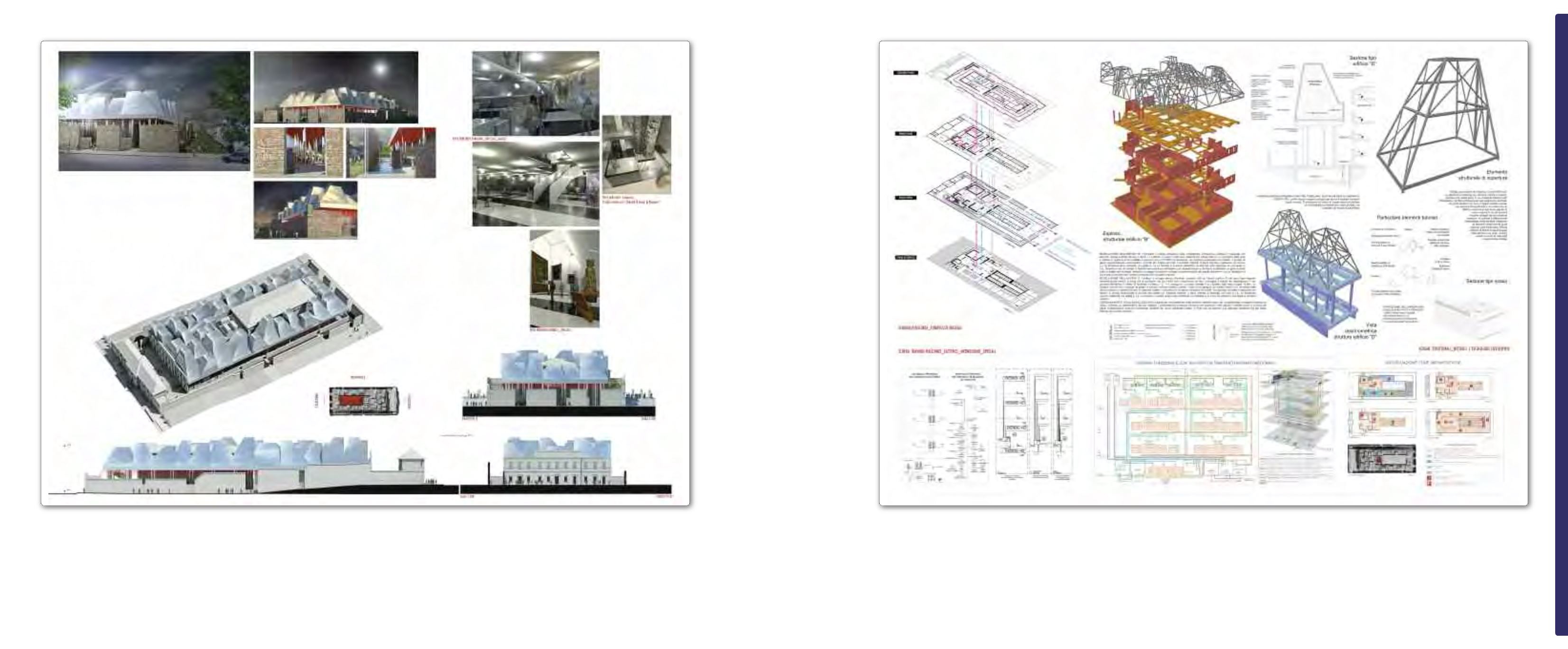
Many of project themes are based on
matters peculiar to Jewish Italian culture,
which at the heart of the exhibition.
Physical separation
such as imprisonment
strips away personal dignity; yet the Jewish
believe that ethnic separation, or rather
their feeling that the Jews are a people set
apart, is central to their ability to not lose
their personal dignity, even when they are
being oppressed. The old and the new are
thus unveiled, and the one tells the story
of the other. The surrounding wall is
reworked through art to become the link
with the city: a river to cross and a
walled
garden
as a place to discover. The
suspended body (like synagogues were
before the emancipation in 1848) of the
museum visit is ring shaped, where time
and history find dwelling in volumes, which
from the outside reflect the sky, that is,
Heavenly Jerusalem
. Exceptional artifacts
(for example, the Scrolls of Rappaport)
stand out like landmarks in the museum.
The ceiling of the square is terracotta in
colour,
Adom
=red and
Adamà
=earth,
which share a common linguistic root with
Dam
=blood and the name Adam. The
niglè
=revealed is the
nistar
=secret of the
project entrusted to the architecture.
Molti dei temi progettuali si fondano su
temi propri della cultura dell’ebraismo
italiano, una presenza intrinseca al-
l’esposizione. La
separatezza fisica
nelle
case di reclusione sopprime la dignità
della persona mentre quella etica nel pen-
siero ebraico è tra i valori centrali che
permettono di non perdere tale dignità,
anche nelle situazioni di oppressione. Il
vecchio e nuovo diventano così rivelatori
e raccontano l’uno la storia dell’altro. Il re-
cinto è riproposto, attraverso l’arte, come
raccordo con la città: un
fiume
da attra-
versare e un
hortus conclusus
come uno
dei luoghi da scoprire. Il corpo sospeso
(come le sinagoghe prima dell’emanci-
pazione) del percorso museale è ad
anello, dove tempo e storia trovano di-
mora in volumi, che all’esterno rispec-
chiano il cielo, ossia la
Gerusalemme ce-
leste
. Reperti d’eccezione (ad esempio i
Rotoli di Rappaport) scandiscono come
landmark
il percorso. Il soffitto della
piazza è color rosso terra,
Adom
=rosso e
Adamà
=terra, che condividono una co-
mune radice linguistica con
Dam
=san-
gue e
Adam
=Adamo. Il
niglè
=rivelato e
il
nistar
=segreto del progetto si affidano
comunque all’architettura.


